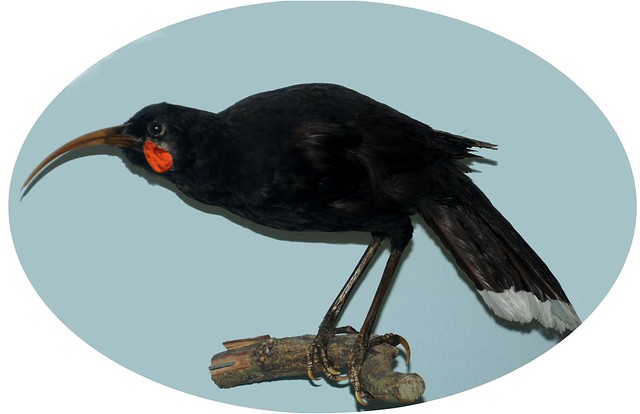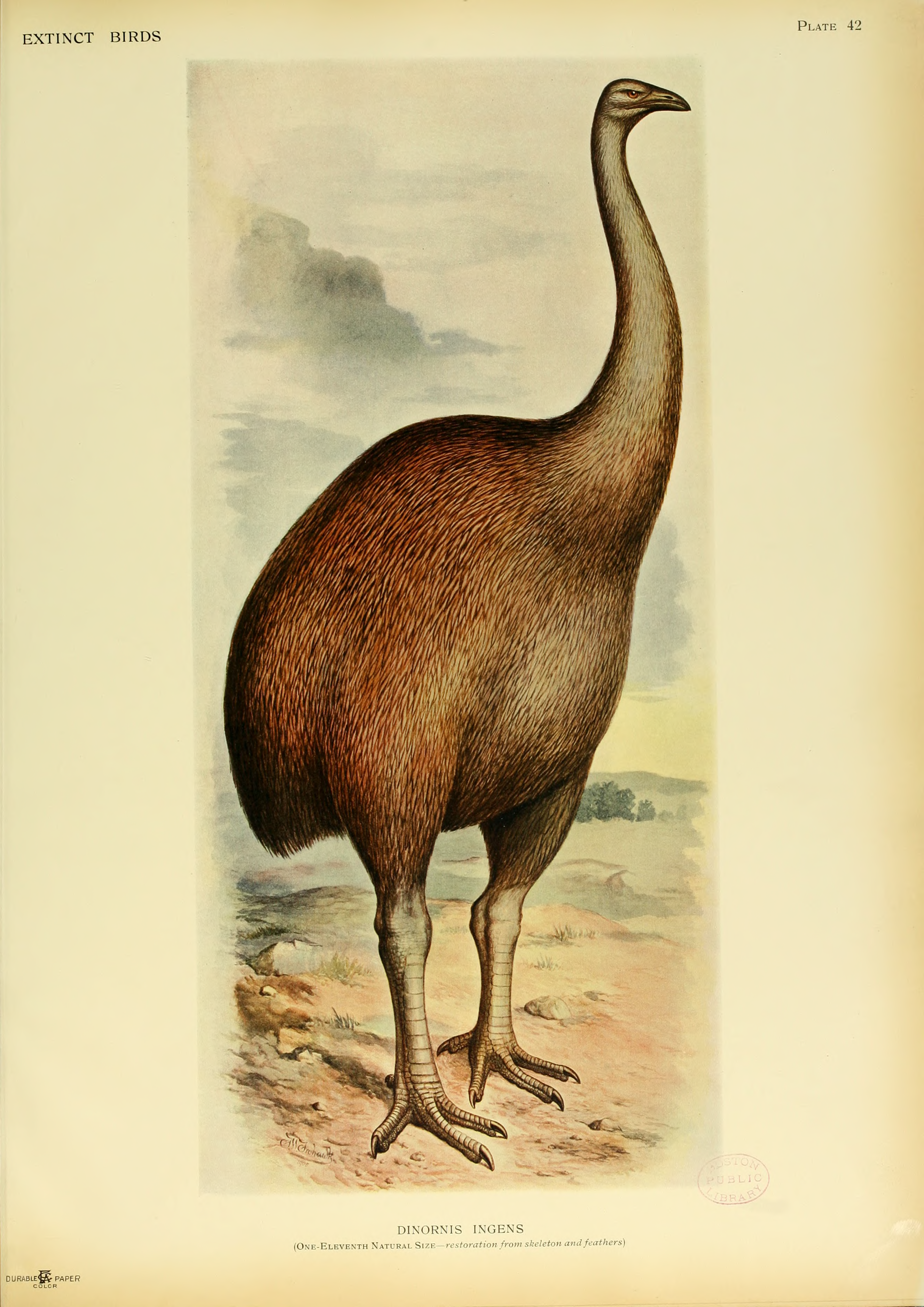It had been a long, sleep deprived night. A loud cackling call, near maniacal, something out of a horror film had split the silence repeatedly since 3am. We knew what it was but that didn't make it any less freaky camped out as we were in the middle of nowhere. Now though the sun was up and it was time to bird. Or at least try to bird for though we were keen to see as many lifers as possible its hard for me to walk through old growth forest like this with primitive giant conifers, huge tree ferns and giant insects without getting distracted. We're further delayed by a classic New Zealand endemic the lizard-like Tuatara. It's smaller than we expected but still oddly magnificient with its array of little horns and dimples and the strangely regal way it holds its little head. But we eventually gave in to the need to drag ourselves away to get to our target area.
A group of 3 Kahikatea trees (Dacrycarpus dacrydioides) are in fruit on one side of the valley and we set up our scopes to wait by this honey trap and see what came to visit. First up is a group of rather drab brownish grey looking birds that remind me of a little brown trogon or a snub-billed thrasher. North Island Piopios; our first lifers of the trip. We were rather taken by their antics flitting from branch to branch and feasting on the multicoloured Kahikatea berries and so I almost missed the arrival of the second of our main targets - a small hollow whistling was the only give away at first as this little thrush sized bird suddenly appeared working in the denser branches below the canopy. After a few seconds though it popped out onto the edge of the tree's crown and we were able to see all the necessary fieldmarks to identify our quarry. A female Huia hopped out onto a dead branch in a hole in the canopy. She allowed me a single digiscoped shot of her, backed by a halo of blue sky, ringed by blurred leaves I would later crop out to leave me with a perfect oval memory of a beautiful species of wattlebird with huge sickle bill curved down and red wattles glowing.

Moments later she disappeared, only for our attention to be drawn down to the forest floor by a crashing in the shrubbery beneath the trees crowns. After momentary confusion the largest bird any of us will ever see bursts out of the undergrowth. Like a huge hairy ostrich, Dinornis giganteus - the North Island Giant Moa, bends down and starts to feast upon the fallen berries as we crane for better views.......
......Except you and I both know I didn't make this trip and never will. All of the animals mentioned with the exception of the Tuatara are extinct. The maniacal calling that would keep us awake was, of course, supposed to be a description of the call of the laughing owl. As I understand it laughing owls were probably unlikely to be alive on North Island by the European arrival although they are plentigul as sub-fossils. The fate of the moa as slow-breeding, easily hunted , enormous meat sources is well known. The Huia and the Piopio both suffered spectacular and sudden population crashes, the Piopio by the 1900s, the Huia by the 1920s. Though the odd sightings of both species (and indeed reports of calls of the laughing owl still come in from time to time) came long after these dates hope is lost for all but the most optimistic.
I set the story on North Island due to the presence there and there only of the Huia - in one piece of good news Tuatara bred there for the first time in living memory in 2008 with hatchlings being recorded in the fenced Karori Sanctuary in 2009 now known as ZEALANDIA (I've mentioned the potential awesomeness for feral free fenced australasian nature reserves previously here and this is another good example). The Huia photo is of course not digiscoped but rather a heavily photoshopped photo taken of a specimen in London's Natural History Museum. It is a female and I recoloured her faded wattles as best I could based on the images I could find on the web, I suspect they are very wrong.
This is the second of these posts I've done. The first is here. I intended to make them a bit of a series and had neglected the project but was reinvigorated by the excellent series of posts Duncan has done on 10,000 birds on the New Zealand extinctions and by Darren's cool Malta post last week. If anyone found this post interesting I really would recommend Duncan's posts whilst at some point I'll do some more posts in the series (sadly I have plenty of material).

2 comments:
I wondered where you were going with this, Tai. Very well executed!
Cheers Mike - at what point did you get it?
Post a Comment